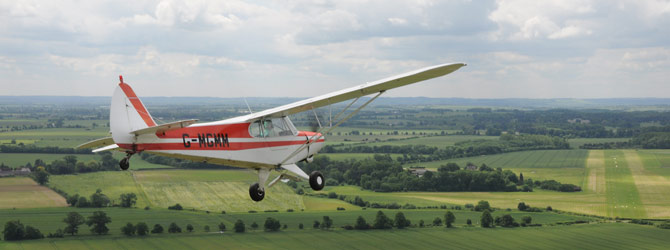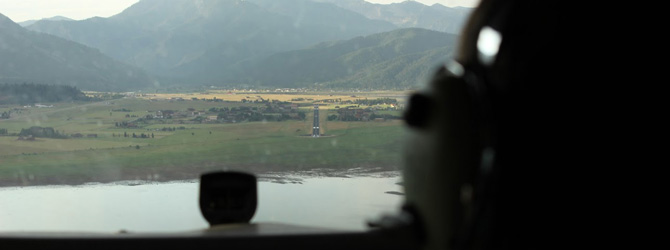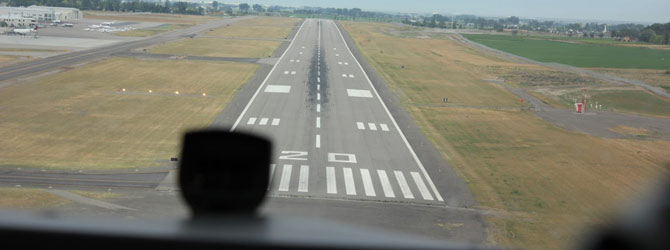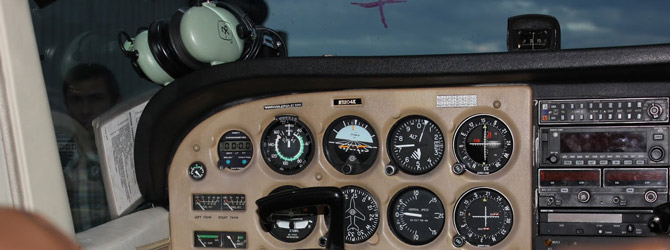
And other reasons flight sim has improved my real world aviation experience
Emergencies
“Ok, I want you to memorize the first three checklist items for each emergency before our next flight,” my instructor said as we were securing the 172 XP to the tarmac. I ran into the FBO and made a few copies so I could spend the next few evenings memorizing and studying. In all reality, most of the steps are the same: pitch for best glide, figure out where to land, troubleshoot if you have time (the steps get more complicated as you start to troubleshoot).
A few mornings later, I called ground with ATIS and got cleared to our usual runway – it was adjacent to the flight school and at 4,050 feet there was more than enough runway for our little planes. My instructor immediately keyed up the comm and requested the longer 9,000 foot runway. Confused, I taxied to the hold short line and completed pre-take off checks. This was my third flight, so I was just getting comfortable with the rudder inputs needed to compensate for p-factor, but I felt like I did a pretty good job holding centerline and this time I didn’t get skittish when the plane started to get a bit light just before takeoff. I was tracking the runway at about 200 AGL when my instructor reached over and pulled the throttle.
“What are you going to do?” I didn’t respond immediately, so he took the plane and let it drift back to the runway. We taxied back, took off again, this time with a request to depart straight out. At about 500 feet AGL we were nearing the end of usable runway and he asked me what I would do if the engine died RIGHT NOW. My options were limited; I had residential neighborhoods and busy roadways out the windscreen. To my right, though, were some soccer fields that looked usable, and behind me was a giant runway. When I indicated that either of those would be suitable, my instructor turned to me and said “straight in front of you. On takeoff, you are going to land straight in front and just try not to hurt anyone else.”
Driving it home
He made that point a few more times, and it never quite made sense until I read the report of a tragic incident at my home airport. A twin Comanche took off runway 17 at Idaho Falls (KIDA) and experienced engine failure on departure. The pilot attempted to return to the airfield, but crashed well short, killing himself and one passenger and injuring a third passenger. This puzzled me a little, so I fired up Flight Simulator and loaded up the RealAir Beech Duke (most realistic twin I own). After taking off runway 17, at about 500 AGL, I killed both engines. I tried returning to the field, just as the pilot had done, and found myself in an unrecoverable stall that put the simulated plane nose down and wing first into the ground.
Here’s the problem, and it’s worth noting that this error has sent thousands of pilots (experienced or not) to an untimely demise. The increased angle of attack and induced drag (created by centrifugal force) create a relatively HIGH stall speed, and if you don’t have the ability to add thrust to compensate, you have to lose altitude to recover. On departure, losing altitude is a deadly option. So I spent the next few hours in various aircraft trying to determine the best options. Here’s the amazing part – heading straight out, most small airplanes can glide for a GOOD distance; the 172 XP I trained in will get more than one mile per thousand feet of altitude at best glide. In rural Idaho Falls that leaves lots of options, as long as you don’t limit them by trying to turn.
How did this save my life? I make completely different decisions in the real world because of the time I spent in Flight Sim practicing engine out departures. At night, I will only use the large runway since most of the time in an engine failure I will be able to put it right back down on that nearly 2 mile long monster; during the day, I have picked out several fields or deserted roads that I can make that will minimize risk to those outside my aircraft.
Emergencies aren’t easily practiced in the real world. Sure, at altitude over farm land or the desert you can pull the throttle or “pretend” to have an engine fire, but recovery is always an option. In a sim, you can actually replicate the whole emergency, all the way to the ground if necessary. That repetition sure worked with stalls, ground reference maneuvers, takeoffs and landings – so being able to drill emergencies is incredibly important, and I believe will make me confident and quick when dealing with the real world emergency I know I am bound to experience in my aviation career.
Communication/Instruments
As I’m out practicing short fields or brushing up on pattern work, I can hear the new students calling the tower with their instructors sitting next to them. The squeaking voices, stutters, or gaping pauses are a sure sign that there’s a low time student about to take to the skies. For several months before I started my training I had been flying online with a virtual airline – I was the squeaky trainee trying to figure out how to make the pilot client work right, enter all the information into the boxes the right way, and then call the right person on the right frequency and say the right thing. But the realism that Vatsim or IVAO offer helped me work through that in a virtual world, so when I took my first flight and I was able to call for clearance or report position to KIDA tower without so much as a bit of hesitation, my instructor was impressed.
There’s more to this than just bragging though: one of the things flight sim can’t do is to teach you how flying FEELS. In early training, that was the hardest thing for me to master. The fact that I didn’t have to think very hard about what to say to ATC meant I was able to concentrate on flying the plane, and could master these new sensations much more quickly than the average student. Because of this, I got through training in the minimum number of hours required – which of course meant that Flight Sim saved me lots of money! (Although that logic didn’t help much with my wife when I was trying to convince her that I should use that savings to purchase everything PMDG has ever made, along with all ORBX software available and each AoA training course).
I took my first trip into class Bravo airspace just a few days ago – and found myself to be more than prepared because of time online. I was very familiar with the procedures and the appropriate communication flow. And hats off to the guys at ZLC on Vatsim, they adhere to the same VFR procedures as real ATC, and other than being handed off a few more times in the real world, the experience was much the same.
Procedures
This one will be quick: here’s something I learned from my NGX and 777 training here on Angle of Attack: Flows and Checklists. In my private pilot training, we used some checklists and a few mnemonics, but nothing as formal as a flow. Since going through training for the PMDG planes on AoA, I’ve put together flows for the planes I fly (172 XP, 182 and a Piper Arrow). It makes the checklists go much faster, and I feel much more prepared as I come in for that landing in a retrac when I’m used to fixed gear. I even say them out loud – although minimums in a 172 are admittedly a bit lower than in the 777, and sometimes my passengers wonder why I say to myself “Continue” about 50 feet above the runway.
I have to admit to being embarrassed to mention my flight sim habit to my instructor at first, and certainly I never brought it up with other trainees around the water cooler at the FBO. But as I’ve progressed past my first checkride, I have realized that the hours spent inside virtual cockpits has made me a better, safer, more experienced pilot. So don’t let the crusty old airline pilots look down on your sim time; with in depth training and a few great add-ons, it’s an amazingly realistic way to experience flight.
This article was posted in Blog, Flight Safety, Flight Simulator, Human Factors, Real World, Safety
Please note: We reserve the right to delete comments that are snarky, offensive, or off-topic. If in doubt, read the Comments Policy.




